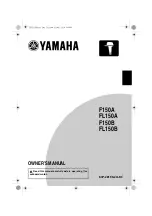
7/30/2019
Cora Z7 Reference Manual [Reference.Digilentinc]
https://reference.digilentinc.com/reference/programmable-logic/cora-z7/reference-manual?_ga=2.21685883.1349070004.1564406803-1961480359.1… 6/23
It is also possible to treat the Zynq AP SoC as a standalone FPGA for those not interested in using the processor in their design. As of
Vivado release 2015.4, the Logic Analyzer and High-level Synthesis features of Vivado are free to use for all WebPACK targets, which
includes the Cora Z7. The Logic Analyzer assists with debugging logic, and the HLS tool allows you to compile C code directly into HDL.
(https://reference.digilentinc.com/reference/programmable-logic/cora-z7/start)
. These files are used to inform Vivado about how the Zynq chip
on the Cora is configured and connected to the rest of the Cora.
Zynq platforms are well-suited to be embedded Linux targets, and Cora Z7 is no exception. To help you get started, Digilent provides a
Petalinux project that will get you up and running with a Linux system quickly. For more information, see the Cora Z7 Resource Center
(https://reference.digilentinc.com/reference/programmable-logic/cora-z7/start)
Those familiar with the older Xilinx ISE/EDK toolsets from before Vivado was released can also choose to use the Cora Z7 in that toolset.
Digilent does not have many materials to support this, but you can always ask for help on the
(https://forum.digilentinc.com)
The Cora Z7 requires a 5 Volt power source to operate. This power source can come from the Digilent USB-JTAG port (J12) or it can be
derived from a 5 Volt DC power supply connected to the Power Jack (J15). Unlike other Digilent FPGAs, the Cora Z7 cannot be powered
through the Shield Header.
A red power-good LED () (LD7), driven by the 3.3V output (VCC3V3) of the DA9062 regulator, indicates that the board is receiving power
and that the onboard supplies are functioning as expected. If this LED () does not illuminate when an acceptable power supply is connected,
please contact your distributor or
(http://forum.digilentinc.com)
Figure 1.1 Cora Z7 Power Circuit
The USB port can deliver enough power for the vast majority of designs. However, a few demanding applications, including any that drive
multiple peripheral boards, might require more power than the USB port can provide. Also, some applications may need to run without
being connected to a PC’s USB port. In these instances an external power supply can be used by plugging into the Power Jack (J15). The
supply must use a coaxial, center-positive 2.1mm (or 2.5mm) internal-diameter plug, and provide a DC voltage of 5 Volts. The supply should
provide a minimum current of 1 amp. Ideally, the supply should be capable of providing 20 Watts of power (5 Volts DC, 4 amps). If the
USB port is to be used to deliver power, the Power Select Jumper (JP3) should be set to “USB”. If an external power supply is to be used,
JP3 should be set to “EXT” instead.
Voltage regulator circuits from Dialog Semiconductor and ON Semiconductor create the required 3.3V, 1.8V, 1.35V, and 1.00V supplies
from the 5V power source. In the event that an external supply or battery pack is used, the on-board Monolithic Power Systems 5V
regulator (IC12) provides the 5V source. Table 1.1 provides additional information (typical currents depend strongly on FPGA
configuration and the values provided are typical of medium size/speed designs). The 0.675V supply is created by a simple Voltage divider
circuit consisting of two 10 KOhm resistors, sourced from the 1.35V rail.
Supply
Circuits
Device
Maximum
Current
Functional Description
1 Power Supplies






































